

 The South African
The South African
by S A Watt
Part I of Mr Watt's article described the establishment and early history of Harrismith, the vicissitudes of its inhabitants which resulted from the outbreak of the Anglo-Boer War, and the military activity which took place in its environs. In particular, the deployment of the British Eighth Division under command of Lt Gen Sir H M L Rundle was described.
By mid-November 1901, most of the Boer activity in the Free State was confined to the north eastern area. The British scorched earth policy was being assiduously applied in order to starve and demoralize the Boers into submission. The Boers, however, were proving hardy and elusive. Gen C R de Wet especially, was impossible to contain.
In early December, the 1st and 2nd Imperial Light Horse and some Yeomanry under command of Gen Dartnell left Harrismith for Bethlehem in an attempt to prevent De Wet breaking out to the south.
The British column of both battalions ILH and Yeomanry left Bethlehem for Harrismith at 08:00 on 18 December. A report from a surrendered Boer indicated that seven commandos were waiting on the road. De Wet had in fact posted half of his 500 men on a spur overlooking the Tigerkloof Spruit, while the remainder were concealed in the ravines at the eastern end of the Langberg. Nothing happened until 11:00 when the 2nd ILH, who were in the vanguard, were charged from the spur by 200 men. The attack was met by the ILH, who promptly occupied the spur. The Boers then turned their attention to the rest of the column, in the middle of which were the Yeomanry and artillery and to the 1st ILH, the latter having occupied a rise to the rear, three kilometres distant.
The Boers were beaten off, retired to the Langberg, and then were seen retiring south-eastwards towards the hills and ravines 10km away. The British casualties totalled 19, of whom, according to the Times History of the War in South Africa, Dartnell's losses were one man killed and 14 men wounded. The Boer losses, according to Three Years' War, were four killed and five wounded. For gallantry on this occasion Surgeon Captain T J Crean of the 1st ILH was later awarded the Victoria Cross. At 15:00 Dartnell moved on, reaching Elands River Bridge, some 25 km distant, the following day.
Towards the end of 1901 the emergence of the blockhouse became evident in the eastern regions of the Colony. First used to strengthen the defence of railways, blockhouses were later erected across the country and the barriers so formed were intended to deny the Boers free passage. Blockhouses consisted either of substantial stone forts, constructed at strategic localities, or the more numerous circular structures made of two sheaths of corrugated iron packed with shingle. Loopholes at regular intervals provided a wide field of fire. Blockhouses placed at intervals of about 900 m, were surrounded by an entrenchment and barbed wire. The usual garrison for the blockhouse was seven men, together with three or four Black men for sentry-work at night.
The blockhouse line in the north-eastern region of the Colony was begun in December 1901. One chain, a continuation of the Heilbron-Frankfort line, ran east through Vrede(1) to Botha's Pass, while another, extending eastwards through Kroonstad, ran through Lindley, Bethlehem, Harrismith,(2) where it bifurcated; one line running to De Beers Pass(3) while the other extended to Oliviershoek Pass.(4) Both lines were begun in December 1901 and completed in February 1902. Further south an additional line linked Bethlehem through the Brandwater Basin to Ficksburg.(5) Coupled together with the trunk railway in the west (linking Bloemfontein to Pretoria), and by posts at De Beers, Muller's and Botha's Passes in the east, these lines were to become the framework within which the great 'drives' were put into operation in 1902.
Before this last phase of the war began, De Wet had struck a severe blow against a force engaged in the construction of the Harrismith-Kroonstad blockhouse line. Construction had begun at both ends, to the west the line reached Lindley; in the east it had reached Elands River Bridge, some 29 km from Harrismith. The column covering the construction of the blockhouses under Maj F A Williams, had marched 21 km from Elands River Bridge to the farm Tweefontein and encamped on a hill named Groenkop. There the column was well placed for observation from the Langberg 10 km to the west. By 24 December the line of blockhouses had reached the farm Tradouw five kilometres from Groenkop, and Rundle came out to this spot in order to superintend the work in person. On the same day Williams' force was weakened by the withdrawal of 150 men to Tradouw to protect the working parties, while Rundle established his headquarters at Mooimeisiesrust, a farm about five km north of Groenkop. His escort consisted of some 380 infantrymen and one field gun.
The central intelligence at the British headquarters in Pretoria had issued daily reports of probable attacks on Harrismith and Elands River Bridge, but without actual knowledge of De Wet's whereabouts these reports were considered of little value. Rundle's intelligence had reported that there were only 75 Boers posted as scouts in the neighbourhood, and without this information the British forces disposed at Mooimeisiesrust, Tradouw and Groenkop were considered safe.
The withdrawal of the infantry from Groenkop left Maj Williams with four companies of the Imperial Yeomanry and two guns. The camp consisted of tents of the headquarters near the summit, while down the gentle eastern slope were the Yeomanry, the horse lines and transport wagons, and lowest of all the hospital. For defence six piquets were posted on the escarpment adjacent to the steep north-west and southern slopes of the hill and the remainder down the gentle eastern slope. On Christmas eve, as survivors of that night afterwards recalled, throughout the evening the sound of popping corks and the notes of old songs had resounded through the camp.
De Wet, after his action at Tigerkloof Spruit, retired to the Langberg. During the next few days he received reinforcements, and, in all, some 1 100 men in scattered bands lay within immediate call. De Wet had observed the progress of the blockhouse line, the reduction of the British force at Groenkop, and seen the sentries take up positions at their night posts. In addition, the British guns had disclosed their presence when both opened fire on a Boer reconnaissance.
Having established that the British force at Groenkop invited attack, De Wet had ordered a concentration of 600 men in the valley of the Tigerkloof Spruit to the north-west of the hill. Leaving one hundred men to guard a gun and the pack horses, the remainder departed on horseback and arrived at the foot of the steep western slope at 02:00 on Christmas morning 1901. The ascent was made up two gullies on the south face, and when the summit was reached they opened a heavy rifle fire on the piquets and the gunners. In the sleeping camp below, the sound of musketry drew men out of their tents. Some fled in panic down the eastern slope, but the remainder went to their allotted positions in the event of an attack. The Yeomanry suffered severe losses. The 36th Company lost their leader Lt S Hudson in an attempt to reach the northern end of the hill and never succeeded in gaining any coherent formation, but some 50 men of the 34th Company led by Capt S Hall and Lts T Agnew and Stutfield, breasted the hill to gain the western face of the plateau. There were scarcely any Boers in that quarter but as soon as the Yeomanry appeared they were enfiladed with heavy fire from the north. Hall and Agnew were shot dead and Stutfield was wounded. Maj Williams joined the Company half way up the slope at the moment that some 300 Boers charged over the plateau. Rifle fire from the 53rd Company ensconced below the plateau temporarily checked the Boer advance. A few returned the fire and mortally wounded Capt H Crawley. The Boers continued their charge, both guns having already fallen. Lt Hardwick, manning the pom-pom, was killed at his post. The Boers engulfed the weak 34th Company and several superior officers. Williams was killed, Capt G Grice, the adjutant, was mortally wounded. The attackers swept into the tented camp and a small band of Yeomanry made a desperate effort to repel the rush. Lt J Watney of the maxim gun section, not knowing where to fire, headed up the hill and was killed. The plateau was lost and the Boers descended to the transport and horse lines. At the hospital Dr G Reid, a civilian doctor, was killed. Meanwhile, the Boers having gained a victory, the detachment of the 53rd Company held out a little while longer. While some attempted to escape down the slope below, the Boers appeared on their flank, and with heavy rifle fire, prevented any further movement. Only 20 Imperial Yeomanry escaped. The last shot was fired at 03:15.
The British losses had been heavy. According to the Times History of the War in South Africa, six officers and 51 other ranks were killed or died of wounds, 88 were wounded and 206 were captured. According to De Wet in Three Years War the Boers lost 16 killed or died of wounds and 28 wounded; among the dead were Cmdt Olivier from Bethlehem and Fd Ct J Dalebout from Harrismith, while Fd Ct Louwrens died of wounds.
Rundle had been awakened at 02:00 with the news that firing had been heard on Groenkop. His force was considered too weak to venture out. Accordingly, he sent out a patrol which returned with the news that the hill was in the possession of the Boers. It was only at about 07:00 that the Imperial Light Horse, summoned from Elands River Bridge to assist, arrived and Rundle felt it safe to proceed to Groenkop. By this time De Wet and his men, with as much booty as could be taken, were beyond the Tigerkloof Spruit. The Boers turned north towards the country between Reitz and Heilbron. On the morning of the 26th he dismissed the prisoners, some of whom made their way to Bethlehem, while the remainder, taken through Naauwpoort Nek, were released there.
The opening days of the year 1902 found the whole campaign in South Africa directed at the eastern region of the Orange River Colony. Across the whole of this area there was not a British convoy whose safe arrival could be counted on; not a garrison that did not stand continually to arms; not a column which, even whilst it marched against the enemy, had not to move without being strictly on the defensive. The history of the next few months was to be one of continued effort to bring the guerrilla leader, De Wet, to book.
By now the British were prepared to embark upon two new tactics embodied in their great sweeps (termed 'drives') across the country. A principal cause of failure to date was the centralized control in Pretoria which provided the field commander with little initiative. Another was the lack of tactical coherence by which the columns, particularly at night, could not cover all the ground so that the Boers slipped through the gaps. The remedies for these faults were the consolidation of central control; and in the field, that all men on outpost duty at night should form a continuous line of picquets. In addition, the flanks of the blockhouses lines were to be strengthened with additional infantry, while the drive as a whole moved towards a line of blockhouses similarly strengthened; or, if a railway, patrolled by armoured trains. Whether by men, guns, entrenchments, forts or trains, the whole diminishing area was to be hedged in completely.
In early January 1902 De Wet remained near Reitz. Suspecting that something was afoot with the British columns, he at once established heliographic communication with his men. Mears received orders for his commando to join him, and attempting to gain access to the west, ran into the detachments of a British column. After a skirmish, Mears was captured. The Boer losses were 13 killed or wounded, amongst the former being Wessels, 27 prisoners and six carts. The British lost three men. Three wagon loads of ammunition and the two guns lost at Tweefontein, were captured. Four columns took to the field on 5 February 1902. Starting from a line from Frankfort in the north to Kaffirkop (a hill east of Lindley), some 8 500 men advanced westward for four days arriving at the western railway. Although De Wet evaded capture by escaping to the south of the enclosure (units destined to strengthen the line near Lindley had not arrived in time), the drive resulted in 286 Boers being either captured, wounded, or killed.
Kitchener immediately made preparations for another movement on a vastly superior scale. The area, described above, had been swept. The plan was to drive over the rest of the eastern part of the Colony with a strip of Transvaal added, to include the whole country between the Johannesburg-Volksrust railway, the Drakensberg, and the line linking Winburg to Harrismith (MAP 2). In the first stage the British columns would advance eastwards from the railway till they reached the line from Standerton to Tafelkop. Then the left of this line was to wheel with Tafelkop as a pivot, until it faced south, deployed along the blockhouse chain from Tafelkop to Botha's Pass. Meanwhile another force was to hold the banks of the Wilge River after it had advanced from the Kroonstad-Bethlehem blockhouse line. The second stage would be the containment of any Boen caught against the Harrismith-Van Reenen's Pass blockhouse line.
The movement, to last 14 days, began in the south on 14 February 1902 with a force under Lt Gen E L Elliot. His command included the columns of Lt Col R Fanshawe, Lt Col De B Lisle, Maj H O Holmes, Maj W R Manhall, Col the Hon R T Lawley and Maj J P du Cane; in all, 6 178 men with 40 guns (including six machine guns). The four last named columns, after forming a line from Kroonstad in the north to Doornkop in the south, moved eastwards and reached Lindley in two days. After a rest of three days, they continued forwards and crossed the Liebenbergsvlei and halted on the west bank of the Wilge River. Since the area to be cleared along the southern flank was not bounded by blockhouses, a force comprising two columns of 1 100 men under Col Heath and Maj Kenna, all under Lt Col J S S Barker, was posted along the road from Senekal to Bethlehem.
The northern advance in its initial stages was uneventful. Three columns totalling 4693 men with 14 guns (including one machine gun) moved eastward. A column under Sir M Rawlinson skirted the railway, with the other two, those of Lt the Hon J Byng and Col M F Rimington on the left. (MAP 2). The movement was strengthened on the southern flank, along the Heilbron-Frankfort blockhouse line, by three columns totalling 2253 men with eight guns (including two machine guns) under Lt Cols A E Wilson, J L Keir and Maj J H Damant. A delay of two days was ordered to permit the clearance of a band of Boers from the Suikerbosrand near Heidelberg. That band divided, one heading northward, with the remainder advancing towards Villiersdorp (today called Villiers). On 16 February the march was resumed with Keir, Damant and Wilson taking position in the right flank. At night the front was guarded by entrenched eight-man picquets with sentries located 50-100 m apart. Some 450 m to the rear another line of picquets was placed. In three days a distance of 104km had been traversed, and by the 18th the line on the left touched Standerton, while the right was at Tafelkop, the whole ready to pivot about this point. After a halt of 24 hours the wheel was begun. As Rawlinson's force swept across the vertex formed by the boundary of the Transvaal and the Free State with Natal, he was joined by a column of 1 102 men with three guns and two machine guns under Lt Col J E Nixon who came from Paardekop Station. Nixon, after assisting Rawlinson to sweep the Versamelberg, came into the general line with Rimington and Byng. Meanwhile the force under Keir and Damant had moved to Rimington's right (MAP 2).
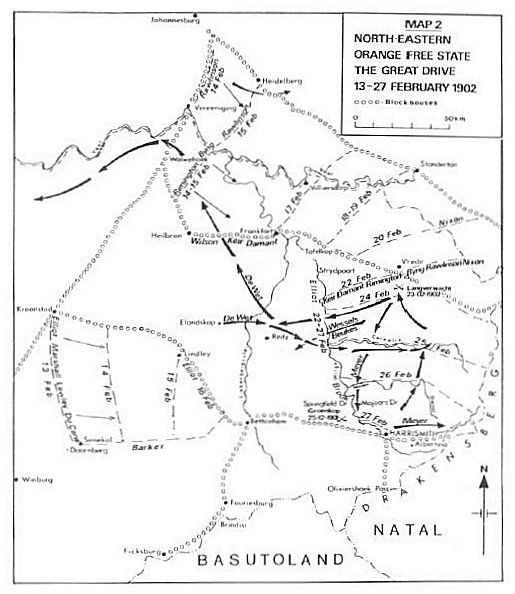
First Map
In the south, the drive under Elliot reached the Wilge River, a slender line being held from Strydpoort in the north to Majoors Drift in the south. The southern boundary along the blockhouse line was strongly held. Lt Gen Rundle, having relinquished command on 19 February 1902, was succeeded by Maj Gen E S Brook who became responsible for the defences in this quarter. Every available man, induding the 840 strong force of Maj Gen Campbell with thee guns, took post along the line from Harrismith to Bethlehem. Barker, with his columns, was pressed into service along this line, while all the passes along the Drakensberg were held by fortified posts. Until then the drive had gone smoothly, but new difficulties had to be faced. On the advance southwards Rimington, on 22 February, had crossed the blockhouse line which ran obliquely to the south-east while the columns of Byng and Rawlinson were to the north of it. The Boers, penetrated the barrier with their cattle with considerable ease. Many men of the Vrede and Frankfort commandos burst through the line towards the south.
De Wet, who was at Elandskop, decided to accompany Pres Steyn and met him near Reitz. On hearing of Elliot's eastern movement the whole party crossed the Wilge south of the junction with the Cornelis River. They had unwittingly, as had the Vrede and Frankfort men, entered the cordon between the converging British columns. The bands under Mentz of Heilbron, Beukes of Bethlehem, and Van der Merwe of Vrede, had given way to Elliot's movement, as had the Harrismith men under Jan Meyer. In addition, Rawlinson's march north of the Vaal River had driven 300 men under Gen Alberts before them. With the fighting Boers were a multitude of non-combatants; the old men, women and children. In all about 3 000 Boers were estimated to be within grasp of the converging British columns of some 30 000 men.
On the evening of 22 February, the groups of Boers made contact. De Wet decided to break out and chose to fight at once at Hol Spruit to the south of Vrede. There the two British columns encountered were those of Rimington in the west and Byng in the east. The Boers concentrated at the farm Brakfontein, and, soon after sunset on 23 February, set their horsemen, cattle and vehicles in motion.
The Boer force of 800-900 men advanced. In the middle of the force were De Wet and Steyn, behind whom were the vehicles, followed by the cattle. On approaching Hol Spruit De Wet detailed a force under Ross, Manie Botha and Alberts to ride forward and breach the British line. The spruit was crossed on the farm Kalkrans, and the advance party, skirting the slopes of a spur on the farm Langverwacht, attacked the 7th New Zealand Mounted Infantry under Col Porter. Heavy Boer rifle fire enfiladed the adjacent defensive posts. On top of the spur the Boers, then with the main body in support, directed their fire on to a pom-pom under Capt Begbie, which, after having been fired at the cattle, jammed and Begbie was killed. The New Zealanders' right flank fell back and formed a fresh front, rallying on the New South Wales Mounted Regiment under Lt Col F Cox. There were no reserves and the only support available were the picquets along the line. The concentration of rifle fire could not halt the stampeding cattle, many of which drove through the British line. At that stage of the action the Boers had breached a gap some 800m wide, through which poured a large number of men. Manie Botha, after guiding his men through, returned to the breach to render further assistance. By the time he rejoined those in the rear the British had rallied their men and made passage through the lines dangerous. By midnight some 600 Boers had broken through the cordon. The remainder, occupants of vehicles, and a multitude of cattle left behind, fell into British hands. According to The Times history of the war in South Africa the Boers lost 14 killed and 20 wounded. In contrast the New Zealanders, who bore the brunt of the Boer attack, lost 23 killed (including two officers) and 43 wounded, while the men under Cox had only three wounded, and, from the pom-pom section, one killed (an officer) and two wounded.
De Wet's was not the only force to escape at Langverwacht on the 23rd. Wessel Wessels, with the rest of the Vrede commando, passed through the British line on the Wilge River at Zandveld, and was followed by Beukes with the Bethlehem men. The next day, Mentz and the Heilbron men, crossed the line at Waaiwater.
The British advance was resumed on 25 February, this time to the Cornelis River, and on the next day to a line along the Molen River-Dwaal Spruit. At midnight a body of some 700 desperate Boers suddenly rushed Nixon's outpost. A few broke through, the rest were driven back and 10 were captured.
The drive until now had been disappointing. Since the 16th only 200 Boers had been captured, but at the last moment fortune favoured the British. Only one commando remained in the area to be swept by the drive, that of Jan Meyer and the Harrismith men. After the fight at Langverwacht, Meyer retired south, gathered the rest of his commando, and strove for an outlet to the south-west. On the night of 26 February he made an attempt to break out over the Wilge River but was repulsed at Springfield Drift by Brook's troops from Harrismith. Beaten back from the drift, Meyer hurried eastward. His men had lost heart; when Rawlinson reached the Tandjiesberg, a cluster of hills east of Platberg, he encountered two envoys seeking terms for the entrapped commando. No conditions were granted other than that the commandos could retain their personal belongings. Within the hour, the time allotted for all the Boers to surrender, 648 men came forward under a white flag and surrendered to Rawlinson with 1 078 horses, and 47 carts and wagons. Lord Kitchener, as he rode out of Albertina station to greet the troops on 28 February, had no reason to be dissatisfied with the results. This was the end of the drive and the efforts of the British columns yielded a total of 778 captured Boers, 50 men killed, and the seizure of 25 000 head of cattle, 2 000 horses and 200 vehicles.
After escaping from the converging columns, the Free State Government took refuge on the farm Rondebosch, north-east of Reitz, to where they fled on the 21 February, and returned after the ordeal at Langverwacht, on 2 March. De Wet remained with them. Meanwhile, Lord Kitchener, in an attempt to clear the Boers from the eastern part of the Colony, resolved once more to sweep the area between the Liebenbergvlei in the east and the railway in the west. President Steyn decided to abandon the area after hearing that the British columns were on the move. De Wet, reluctant to leave his harassed comrades, yielded to pressure. Rather than be confronted with the approaching British columns, the Boer party was to take a circuitous route of some 290 km, crossing three blockhouse lines before arriving safely in the western Transvaal.
The British drive comprised three phases. The first phase involved the columns under Garratt (replacing Byng), Rawlinson and Nixon, starting out on 5 March, and sweeping a front of 50 km from Majoors Drift on the Wilge River to the line Lindley-Noble Mills. The second phase involved a force of 8 200 men, under the overall command of Elliot, starting a day earlier and including the columns of Barker, Du Cane, Rimington, De Lisle and Fanshawe. These forces passed athwart the columns of the first phase on a front of 80 km from the line Majoors Drift-Bethlehem towards the northern blockhouse line. On 10 March the eight columns then on the Liebenbergsvlei commenced the third phase. (MAP 3). The entire force then moved westwards towards the railway. There was only one commando in the area namely the Heilbron men under Cmdt F Mentz all of whom evaded capture by escaping across the Heilbron-Wolwehoek blockhouse line. The drive ended in the capture of 82 Boers, 47 vehicles and a small quantity of stock.
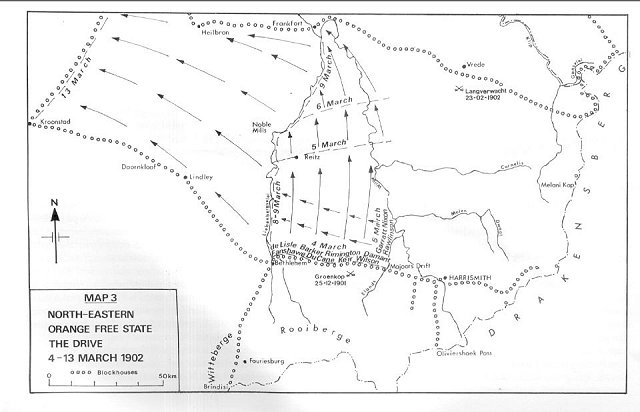
Second map
On the sixth day after the arrival of the British force at the railway, a drive by Barker (with four columns), Nixon, Garratt, and Rimington with one column each, totalling some 6 900 men under Elliot, struck out again. Starting from Doornkloof (on the Kroonstad-Lindley blockhouse line) in the south, to Heilbron in the north, the drive was to last 16 days terminating at the Drakensberg. Heavy rains marred the plans and prospects from the outset. The muddy conditions and fatiguing days, waiting for swollen rivers to subside, made progress miserably slow. The only incident worthy of note was a breakthrough by some Boers in front of Garratt's men near Langverwacht (the scene of the breakthrough by De Wet) on the night of 2-3 April. The next morning many cattle and 11 prisoners were taken. On 5 April the drive ended on a front from Melani Kop in the south to Gansvlei Spruit in the north (MAP 4). The result was 10 Boers killed and wounded, while 76 were taken prisoner. In addition 4 800 head of cattle and horses, 178 vehicles and three guns were captured. This was the last great drive in the north-eastern region of the Colony.
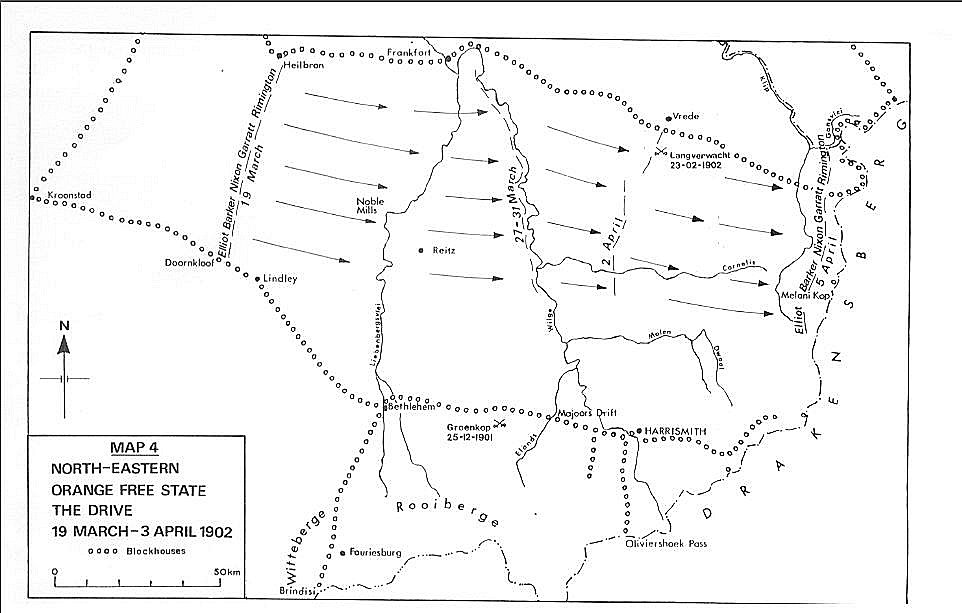
Third map
Early in April the great gathering of British troops drawn up at the Drakensberg after their long march across the Orange River Colony was partially dispersed. Colonels Nixon and Garratt headed northward to the Transvaal. Lt Gen Elliot with the columns of Lt Cols De Lisle and Fanshawe, and Lt Col Barker's men comprising the columns of Majors Marshall, Kenna, Holmes and Heath all retired to Harrismith where they quickly parted. Elliot then moved westward to Bethlehem and Barker headed for Frankfort. At Harrismith Lt Col De Lisle relinquished command of his men, Brig Gen Little taking his place.
Before leaving Harrismith, Elliot was assigned to the Brandwater Basin where the blockhouse line between Bethlehem and Ficksburg was invested nightly by a Boer force. By maintaining rifle fire against these structures it did almost eliminate them as a means of denying the movements of Boers at night. The Boers did not confine themselves to this activity. Before dawn on 8 April, a fierce attack was made against four blockhouses at Steenkamp's Kop (just south of Retief's Nek). In surrounding the blockhouses the Boers directed an intensive rifle fire which resulted in the capitulation of these fortified posts. Some 15 British prisoners were taken while the casualties amounted to three killed and five wounded.
For the next eleven days there were no attacks. On 19 April some 200 Imperial Yeomanry and Mounted Infantry were sent to escort a convoy to Brindisi and, after returning, undertook an attack on a band of Boers at Moolman's Spruit (north of Ficksburg). The party was ambushed, losing 6 killed (2 of whom were officers), 15 wounded and 28 prisoners.
Elliot's force then returned to Bethlehem, headed northward, and took up a line linking Lindley in the west and Liebenbergsvlei River in the east. On 6 May a 270-strong Boer detachment broke through Elliot's line, followed two hours later by the remainder of the force led by Mentz who was unable to break through. Together with Elliot's force barring the south and seven converging columns from north (these had entered the Colony from the Transvaal) Mentz surrendered with 123 men at Grootdam (north of Lindley). This entire operation resulted in 311 Boers being captured and ten killed.
With the close of this operation, fighting in the eastern half of the Orange River Colony ended. The survivors of both the Boer republics had chosen their representatives and assigned them to obtain what terms they might at a conference soon to be held at Vereeniging. The gathering forces then dispersed. The columns under Elliot, Barker, Garrett, Nixon and Rimington spread over a quadrilateral whose vertices were at Lindley, Heilbron, Frankfort and Majoors Drift. Within this they applied themselves to the systematic clearance of whatever crops or supplies still existed. On 15 May these activities were suspended and all the troops returned to the railways to await the outcome of events at Vereeniging.
Thirty Boer delegates from each of the republics assembled at Vereeniging.
Assistant Chief Cmdt W J Wessels and Cmdts L P H Botha and F P Jacobsz
represented Harrismith. Most of the delegates of the Free State were convinced
that they had sufficient supplies to enable them to continue the struggle.
But what about the devastation of the country? Did the fact that cattle,
sheep, crops and other supplies had been cleared from the Transvaal and
the Orange River Colony exercise a decisive influence on the Boer leaders
in the field in May 1902? How effective, as military expedients to end
the war, were the measures employed against civilians, viz., the clearing
of the country and the concentration of the non-combatant population into
camps? That it was the aspect of British strategy which concerned civilians
which broke the Boer resistance would seem to be borne out by a resolution
passed by the republican delegation. This document listed the following
reasons for the Boers laying down their arms.
1 The devastation of the country by the enemy, the burning of the farms
and villages and the destruction and exhaustion of supplies necessary for
support of the Boers' families and the continuation of the war.
2 The suffering and death of the women and children in the concentration
camps.
3 The fact that Blacks had been armed by the British and were participating
in the war.
4 The proclamations which threatened confiscation of the Boers' property.
5 The inability of the commandos to retain any prisoners they captured.
6 A struggling remnant, constituting only a small number of the Boer population,
was practically in a state of famine and privation, and because of the
overwhelming odds in favour of the enemy, ultimate victory could no longer
be expected.
The Anglo-Boer War officially ended shortly after 23:00 on 31 May 1902 in Pretoria with the signing of the Treaty of Peace by both sides.
After the termination of hostilities it was decided that Imperial troops should remain in Harrismith, and in 1903 they occupied barracks on King's Hill. A military settlement was characterised by tree-lined roads, refuse removal and sanitary services. Water was drawn from the Gibson Dam on Platberg and then pumped into a reservoir on the hill. Electricity supply was obtained from the town. Tennis courts and a polo ground were built. Cricket and football were played. The garrison had its own Anglican and Roman Catholic churches. A prominent building was the South African Garrison Institute where a general dealer, a mineral water factory, reading and billiard rooms were to be seen. A school was also established and next to it a hall for gymnastics in which dances and concerts were performed. At the foot of the hill a sturdy building contained the military headquarters. The Garrison Commander, Gen Brook was later succeeded by Gen Blomfield.
In 1904 a census revealed that there was a white population of 4 345 resident at Harrismith of which the soldiers numbered 1 921. By the end of 1902 the regiments comprising the 8th Division had departed, and in the next decade Harrismith was occupied by the 2nd Hampshires, the 2nd Yorkshires, the 4th Royal Garrison, the 3rd Dragoons, the 1st Wiltshires and the 4th King's Royal Rifles. The latter regiment was involved in garrisoning blockhouses from January 1902 until the end of the war and finally departed in June 1904.
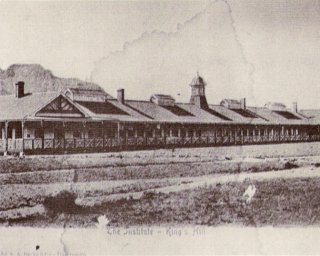
The SA Garrison Institute contained
a shop, a mineral water factory,
billiard and reading rooms as well as a
gymnasium where boxing matches took place,
as did dances, concerts and plays.
It was burnt down in 1912
but temporarily replaced.
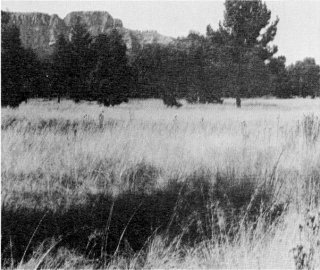
Nothing remains to suggest
the existence of the
SA Garrison Institute building.
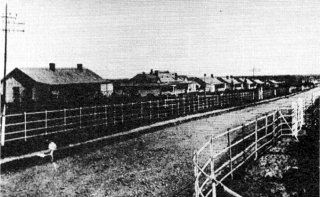
Although termed Infantry Terrace,
these elaborate buildings on King's Hill
more than likely provided accommodation
for the officers.
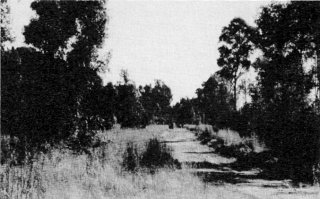
A large number of trees
and tall grass obscures the
complete view looking towards
the town, and only the foundations
of the former buildings help to
identify the locality.
To enable soldiers encamped near Basuto Hill to reach the town, a suspension bridge over the Wilge River was built by the Royal Engineers. It was partly washed away by floods in 1904. By then the regiments were gradually moving to barracks on King's Hill and complete repair of the bridge seemed unnecessary. The troops made a temporary foot bridge of planks resting on barrels. The Town Council acquired the remains of the original bridge, and in 1909 decided to erect a new suspension bridge near the site of the original one.
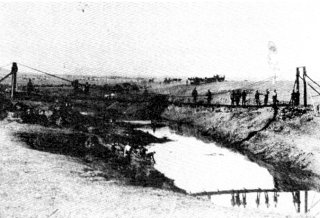
The first suspension bridge
over the Wilge River was erected
in 1900 by the Royal Engineers.
Designed for pedestrian traffic,
it was to provide the British soldiers
easy access into the town from
the area near Basuto Hill.
The structure was washed away
in March 1904. Today, at the same spot,
a more sturdy structure, called the
Hamilton Bridge (named after Sir Hamilton
Goold Adams, Governor of the
then Orange River Colony)
provides access to vehicular traffic
from the town to the Wilge Park.
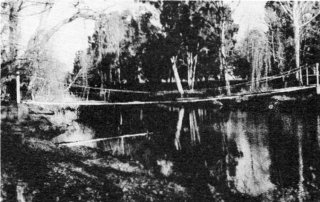
The bridge was duly recovered,
and after 1910 when the recreational area
(President Brand Park) along the river
included the south bank of the Wilge River,
the structure was built some 300 metres
from its original site.
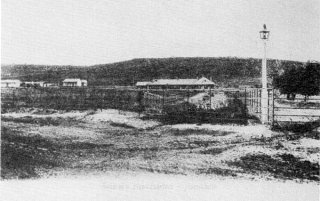
After the war the commander
of the Imperial forces occupied
a house at the foot of King's Hill.

The site today is the new suburb
King's Hill separated from the town
by the bypass linking Van Reenen
with the Transvaal.
The troops provided a favourable financial return to many commercial undertakings. Apart from the shops on King's Hill, business was carried on in the town where soldiers and their wives visited, especially on Saturday afternoons. When the troops departed in 1913 the annual income for the municipality decreased by 600 UK Pounds, while the total loss in income for the town as a whole and the district amounted to 20 000 UK Pounds per month.
The erection of the new Town Hall, officially opened in September 1908, was largely the result of support the troops had given for theatrical performances and concerts in the former building which had proven unsuitable. In addition various improvements to the town were attributed to the military occupation. The municipal abbattoir was condemned by the military authorities. The one which replaced it, the forerunner to a modern complex, was in use until at least the 1930s. Another improvement was the supply of more water to the town to meet the demand of the troops on King's Hill. A dam on Platberg, built by the Royal Engineers, was named the Gibson Dam after a Mr Gibson, a member of the town board who showed much interest in the scheme. The wall of the dam was subsequently raised three times thereby increasing its capacity to 540 million litres.
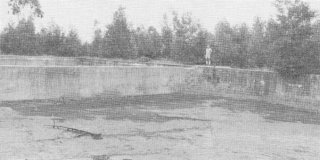
The main water reservoirs
were constructed in 1904 on
the highest point on King's Hill.
Water was pumped from the stream
which flows through the present-day
Botanic Gardens.
From the reservoir it flowed downhill
to the buildings on King's Hill.
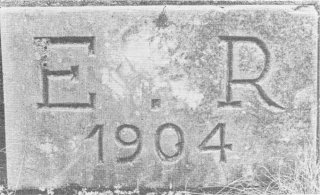
The reservoir foundation stone
is seen between the two reservoirs.
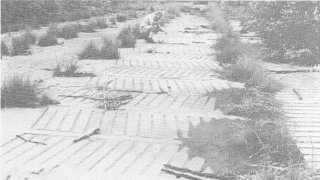
Floors of horse stables,
of which there are many,
are still in a good state of repair today.
In 1908 Lord Methuen, who was the Commander-in-Chief in South Africa, visited Harrismith and informed the garrison that they were to be transferred elsewhere. However, this was only effected five years later. Requests were made by the Town Council that the troops should remain in the interests of the town. All requests were declined by the military authorities and the last of the troops departed from Harrismith in May 1913.
With the buildings standing desolate on King's Hill the Town Council debated whether to take over the entire establishment for the town's own use. It was not feasible to pump water up the hill and the wood and iron buildings would require continual maintenance. The council therefore decided against using the area. At a public auction the buildings were sold for 63 000 UK Pounds after which all were demolished. It was agreed between the town and military authorities that the doctor's house was to be left standing and that the trees planted by the soldiers were not to be felled.
At the end of hostilities 262 soldiers had been buried in Harrismith cemetery. By 1913, when the last troops departed, an additional 122 had been laid to rest. During peacetime the soldiers' families had joined them, some of whom died and are buried in the military precinct of the cemetery.
In 1907 the Town Council was asked to put in order the graves of old men, women and children who had died in the concentration camp. A dominee Theron, then in Bethlehem, wrote that he had been present at most of the burials, but the graves had not been marked, nor any register kept. Some names, written on paper and enclosed in bottles were placed on the graves, but by 1907 these had disappeared.
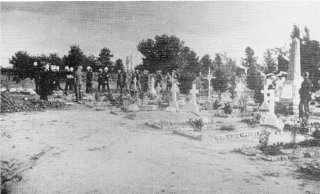
A military funeral
taking place in the
Harrismith cemetery.
The obelisk on the right
is to the memory of the
22 soldiers of the
4th Bn King's Royal Rifles
all of whom died and are
buried in Harrismith.

By careful comparison and
establishing the exact grave
the date of the military funeral
took place in March 1905.
Mr Tom Searle stands on the exact
spot where the Church minister
was awaiting to administer the
soldier's last rites before burial.
HARRISMITH TODAY
In 1987 Harrismith had a population of some 5 000 Whites, 122 Coloureds
and 17 880 Blacks (1986 census). Education for Whites exists in the secondary
phase (the high school has an enrolment of 400) and the primary phase (a junior
school has 780 pupils). Approximately 80% of the scholars are Afrikaans-speaking.
The town also has a hospital, three hotels, and industries which include
textiles, light engineering, dairy products, processed meat and carpet
manufacture.
On approaching Harrismith a visitor cannot help but notice several features which serve as a reminder of the importance the town played during the Anglo-Boer war. To the north-west of the town is a long ridge on which appears the inscription '42nd'. This feature marks the area where the 1st Battalion Royal Highlanders (also known as the Black Watch) encamped at Harrismith from December 1901 until October 1902. The summit of the hill and beyond is now a residential area, called Phomolong, for Blacks. Nearby is another long ridge, called Stafford Hill, where the 1st South Staffordshire Regiment had camped. The regimental emblem on the top has vanished as a result of extensive quarrying begun in 1973. However, further along the same ridge the former camping ground of the 3rd Dragoon Guards can be identified by the regimental emblem on the hillside.
The more durable two-storied stone blockhouses are to be seen at strategic points around the town. One was built in what today is the Botanic Gardens to guard the water supply of the Van During and Hawkins Dams. It has been declared a national monument. Further downstream stands another small structure, now in ruins, adjacent to a secondary water supply. (Probably for the water needed by the inmates of the concentration camp which stood nearby.) To the south of the town, on Basuto Hill, are two blockhouses both of which are derelict. A fifth blockhouse formerly stood to the west of the town near the old wagon road to Bethlehem via Majoors Drift.
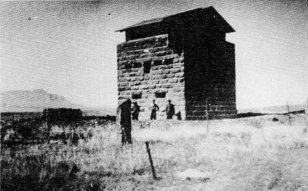
One of the two masonry
blockhouses standing on
Basuto Hill. These more
permanent type blockhouses
(in contrast to the
structures built with
corrugated iron) were
erected at key points.
All these buildings were
surrounded by an entrenchment
and barbed wire and garrisoned
by seven soldiers, and
sometimes also four Blacks.
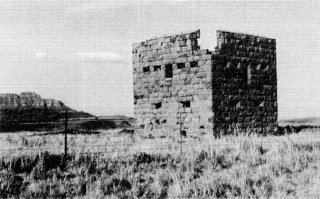
As early as 1904 the
Harrismith Town Council
was discussing steps for
the handing over of these
blockhouses to the Municipality
in order to conserve them
as mementos of the war.
The military authorities
requested one condition, namely
'... that the Council let
them remain as they are'.
Evidently this meant keeping
them in a state of repair
and guarding against theft and
vandalism. Today both
blockhouses on Basuto Hill
are standing derelict.
Apart from the 384 graves of the soldiers who died in Harrismith, many other soldiers' remains have been exhumed from the district and reinterred in the town's cemetery. The remains of 91 soldiers were transferred from Tweefontein, Tradouw, Georgiana, Culloden, Mill (Molen) River Bridge, Albertinia, Slangfontein, Oliviershoek, Oldenburg, Walterton, Gallaway, Roodebloem, Van Reenen, Bughtie and Goedgeven.
No trace exists to mark the location where the concentration camp (second site) was except for the numerous trees in the neighbourhood of the present day gaol. Today large eucalyptus trees, known to have been planted by the inmate children, are the only reminder. A precinct in the town's cemetery contains the graves of those people who died in the Harrismith concentration camps. Only a few individual graves are identified while a granite panel has the following inscription 'Hier en in hierdie onmiddellike omgewing is ongeveer 193 vroue en kinders begrawe. Feite nagevors en gedenkteken opgerig deur Rapportryerskorps, Harrismith 10.10.1977' This information is without doubt obtained from Die Geskiedenis van Harrismith by F A Steytler. Research conducted by the author, after consulting official publications, establishes the number of deaths in the concentration camp at 136.
A large obelisk stands next to the Town Hall on which are inscribed 123 names of soldiers of the 2nd Grenadier Guards and 78 names of the 2nd Scots Guards who lost their lives in South Africa. Although these regiments were based at Harrismith and many of their men were buried in the town's cemetery, some were not, and their graves may be found as far afield as Thabanchu and Standerton.
The market square has been renamed the Deborah Retief Gardens in which a monument, alongside Warden Street, stands to the memory of the men who served in the Harrismith Commando. There is an obelisk in the same street in front of the Dutch Reformed Church listing all the names of the men of the Harrismith Commando who died in the war. Of a total of 73 names of burghers 19 are listed as having died at Platrand (6 January 1900), 32 killed or mortally wounded elsewhere and 22 of whom died in prisoner of war camps overseas and are buried in India and Sri Lanka.
On King's Hill the only traces of former habitation by the British garrison are three punishment cells still standing, the concrete floor of the original stables, the large water reservoirs bearing the engraving 'ER 1904' and foundations of various dwellings. The doctor's house was one of the buildings left standing after all the other structures had been demolished. It was bought by the Davie family and later became Sister A Dugmore's Maternity Home until about 1955 when it was demolished.
The urban area has increased over the past decades. A residential area, Wilgepark, is situated under Basuto Hill and all road traffic from the suburb to the town, as well as from Bethlehem, passes over the Wilge River via the Hamilton Bridge. This Bridge (named after the Governor of the Orange River Colony, Sir Hamilton Goold Adams) stands on the same spot as the original suspension bridge which provided access for the troops into the town. A suspension bridge, rebuilt from the remains of the original military bridge, is found 300 metres from the Hamilton Bridge.
Two recreational activities, namely golf and the Berg Mountain Race, have direct connections with the Anglo-Boer War. During the war the officers of the garrison were enthusiastic golfers and left several floating trophies to commemorate their sojourn. Lt Gen Sir Leslie Rundle left the Rundle Cup and the Rundle Rose Bowl. There are also the Buff's Cup, the Stansfield Cup and Lambert Rose Bowl and the Grenadier Guards Cup. General Rundle was vice president of the Harrismith Golf Club until his death in (1934) and bequeathed money to it
The Berg Mountain Race, held annually, is described as the 'toughest marathon in the world'. It originated in 1922 when a British soldier, Maj A E Belcher, returned to Harrismith where he had been stationed near 42nd Hill during the war. He was referring to Platberg as 'that small hill of yours', and one of the locals immediately bet him that he could not reach the top (591 metres above the town) in less than 60 minutes.
The major accepted the challenge and covered the distance within the allocated time - actually he still had eight minutes to spare. Afterwards Maj Belcher presented a floating trophy as a prize awarded to the first athlete to reach the top of the mountain (the record time today is 22 minutes and 9 seconds). The 12 kilometre race starts from the town's sports grounds, and the route is up the slopes of Platberg passing through the terrain where the concentration camp (second site) once stood. The top is reached via One Man's Pass, close to which a fort, built during the Anglo-Boer War, is to be seen. After traversing a short distance along the top, the descent is made via Zig-Zag Pass, and the race is completed at the sports grounds.
Within the sports grounds stands a stone building which, during the war, was used as a military gaol. After the termination of hostilities it was used, inter alia, as a lazaretto for lepers and as a hospital for Black typhoid patients. Today the building serves as a bus shed.
Many war-time buildings in Harrismith have been demolished or replaced by more modern structures. Amongst those used by the military were the Town Hall (a larger more impressive building replaced it in 1908), the buildings at the railway station (all have been replaced), the home of Lt Gen Sir Leslie Rundle (today a vacant plot), and the headquarters of the Eighth Division (today an empty site). Only photographs taken long ago can help remind the reader of what Harrismith was like as a military town at the turn of the century.
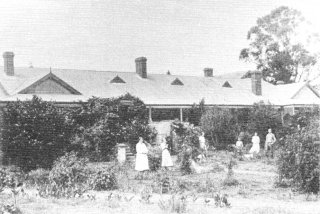
Only three punishment cells and
the doctors' residence survived
the hammer of the demolition teams
after the British departed from
King's Hill in 1913. The doctors
residence, seen above, was used
subsequently as a maternity home
by Miss Dugmore and Miss Davie.
This structure too was demolished
in about 1955.
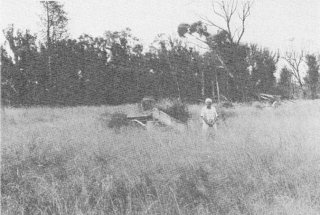
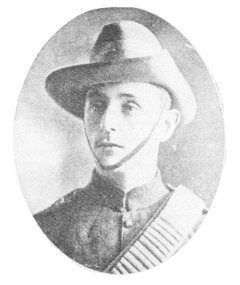
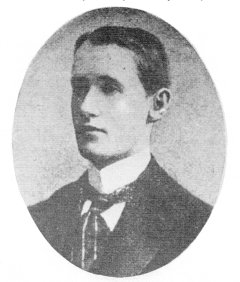
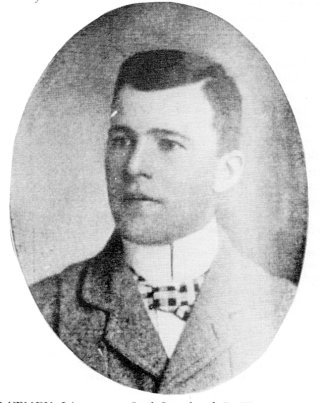
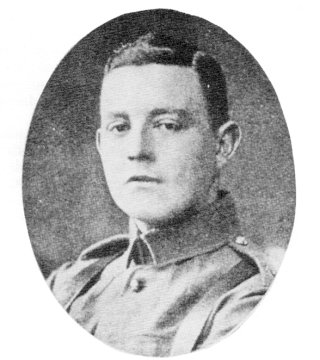
HUDSON, Lieutenant John Stanley. Lt Hudson was killed in action at Groenkop Hill on the farm Tweefontein on Christmas morning 1901. He was born in October 1874 and from 1892 to 1899 was travelling in North America. On his return to Britain he volunteered as a trooper, was accepted and sailed for South Africa in February 1900. He served at Senekal, Thabanchu, Ficksburg, Harrismith, Bethlehem and Standerton and rendered such good service that he was given a commission as Lieutenant. On the Christmas morning that he was killed, Lt Hudson was in command of 36th Company of 11th Bn, Imperial Yeomanry. He had just given the order to fix bayonets while attempting to reach the allotted position on the north face of Groenkop when he fell mortally wounded. He was buried near the battlefield until 1958-1959 when his remains were exhumed and reinterred in the cemetery at Harrismith.
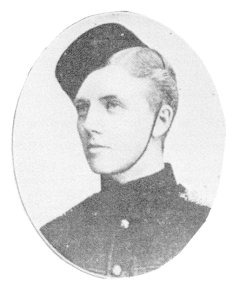
Acknowledgements
I am indebted to the following people without whose assistance certain
aspects of this task would not have been accomplished:
Marie Lotter whose photographs and knowledge of and interest in the town
and its local history have been invaluable.
Bob Moore, whose knowledge of the town and whose enthusiasm in visiting
the surrounding countryside saved me many hours of searching.
Tom Searle whose assistance in locating important people was spontaneous
and who accompanied me to historical sites. He was ably supported by his
wife Doreen whose enthusiastic efforts in locating photographs provided
me with many additional places to visit.
PJ du Plessis, the Town Clerk of Harrismith, who was able to supply me
with the latest statistical data of the town.
Bibliography
Amery, L S (ed.) The Times History of the War in South Africa. 7 Vols
(London. 1900-1909)
Ascoli, David A Companion to the British Army 1660-1983. (London. 1983)
Creagh, O'M et al The Victoria Cross. (Reprint) (Wiltshire. 1985)
Dictionary of National Biography 1931-1940. (Oxford. 1949)
Dooner, M G The last Post. (Reprint) (London. 1980)
Gibson, G F The Story of the Imperial Light Horse. 1937
Hawkins, E B The Story of Harrismith. (Ladysmith. 1982)
Harrington, A L The Great Trek. (London. 1972)
Harrismith, Gem of the Free State (brochure)
Kestell, J D Through Shot and Flame (Reprint) Johannesburg 1976
Mackinnon, J P and Shadbolt, S South African Campaign of 1879. (Reprint)
(London 1973)
Moffett, E C With the Eighth Division. A Souvenir of the South African
Campaign. (Kingston-on-Thames. 1903)
Professional Papers of the Royal Engineers Vol 30.1904
Register of the Victoria Cross (Gloucestershire. 1981)
Report on the Concentration Camps in South Africa. (Cd 893. London. 1902)
Report of the Good Hope Society for the Aid to Sick and Wounded in War
South African War 1899-1902. (Cape Town. 1902)
South African Field Force Casualty List 1899-1902. 1972
Spies, S B Methods of Barbarism? (Cape Town. 1977)
Standard Bank Harrismith Mountain Race 1986 (Brochure)
Steytler, F A Die Geskiedenis van Harrismith. (Bloemfontein. 1932.)
Van Schoor, M C E Die Bannelinge ABO Krygsgevangenes 1899-1902. (Bloemfontein.
1983)
Return to Journal Index OR Society's Home page
South African Military History Society / scribe@samilitaryhistory.org